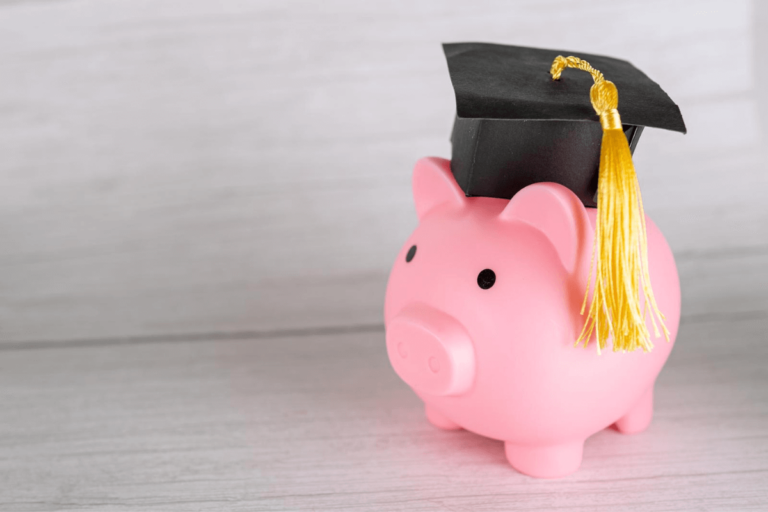5 Simple and Efficient Steps to Achieve Debt Freedom

Carrying balances on multiple credit cards is stressful and expensive, and paying them off quickly can be a challenge.
That’s especially true if you are living paycheck-to-paycheck or dealing with other debts simultaneously, like student loans. But it is possible to get debt relief even with those challenges.
This 5 Step guide can help you develop a plan to pay off your debt or identify the best debt relief option when a traditional payoff plan just won’t cut it.
Step 1: Stop making it so difficult to get debt relief
Before we get into how to set up the right plan to get out of debt, we need to touch on one of the biggest mistakes people make when they need debt relief— they keep spending on credit cards while trying to pay them off.
It’s the adage of taking two steps forward and three steps back. If you pay off $100 but make $100 in new charges that same month, you’re never going to get anywhere.
The only way to get out of credit card debt is to stop creating new debt while paying off what you owe. This means you need a budget that covers all your expenses and builds in emergency savings. That way, you can avoid new charges to cover daily expenses and emergencies, which leads us to Step 2.
Step 2: Create a budget that’s optimized for getting out of debt
A budget is essential in your quest to get out of debt, no matter which debt relief option you end up using. You need to get a budget in place—written out and not just in your head.
- Total up all your monthly income
- Write down all your expenses, even the little ones.
- Total up all your expenses and subtract the total from your income.
- If you spend more than you earn, it’s time to cut back.
- If you don’t spend more than you earn, take some of the leftover income you don’t spend and set that for savings.
Savings should be a line item in your budget. Ideally, you want to save 5-10% of your monthly take-home income. If you can’t make that target, see what you can cut to reach it.
Once you have all that set, you now have a basic budget that you can use for regular money management. But now, you want to set a debt elimination budget. Any money that you aren’t using for necessities or saving should go towards debt elimination. That means it’s time to go back through and make more cuts.
The goal is to free up as much money as possible to provide the relief you need. Remember, these cuts are temporary. Once you pay off your debt, you can add these expenses back in. Now, however, you’re in budget crisis mode. So, if it’s not essential, it needs to go.
Step 3: Take stock of your debts and decide on a repayment strategy
Now it’s time to get down to the nitty-gritty of obtaining debt relief. That starts by figuring out exactly how much you owe, what it’s costing you, and where each debt stands.
Gather up your most recent credit card statements or login into your apps to write down the following for each credit card:
- Current balance
- Current monthly payment
- APR (interest rate)
- Status of the account (current, behind, charged-off)
This list will help you determine the best strategy to use to get debt relief:
- If you owe less than $5,000 total, go to Step 4 to set up a repayment plan.
- If you owe more than $5,000, go straight to Step 5 to start researching options for debt relief.
Step 4: Set up a debt reduction plan
If you owe less than $5,000 total, then you may be able to get out of debt on your own just by making payments strategically.
This is where your budget comes in because minimum payments aren’t going to help you get out of debt quickly. Instead, you need to put as much money as possible towards paying off one debt at a time.
There are two schools of thought for which debts to pay first:
- Avalanche
- Snowball
With both strategies, you make minimum payments on all your other credit cards to keep them from falling behind (or at least further behind than they are). Then you devote all that extra cash you freed up to make the largest payments possible on one debt. As you pay off each debt, you eliminate one bill and free up more money to pay off the next one.
The avalanche method
With the avalanche method, you prioritize your debts from highest APR to lowest APR. You pay off the highest APR debt first because it’s costing you more money with added interest charges. By paying it off first, you save.
However, if your highest APR debts also have your biggest balances, an avalanche can be daunting. It will take a long time to pay off the first balance, and you may lose focus. In this case, snowball may be more effective.
The snowball method
With snowball, you prioritize your debts from lowest to highest balance. You pay off the debt with the lowest balance first, then the next lowest, and so on. This helps you get a few quick wins and build cash and momentum to tackle your largest balances.
Customizing the best method for your needs
Cute names for debt reduction strategies are great, but the reality is that you may want to use a mixture of the two. For example, if you have a few low balances that you can pay off in one or two months, take those out first. Then switch to avalanche and go in order of APR.
You may also want to adjust your strategy if you have debts that are behind. For example, if you’ve missed a credit card payment by more than 30 days, it’s damaging your credit. To stop that damage, you must pay everything that’s in arrears (all the charges that are behind) plus the current month’s payment.
Each month that you don’t bring the debt current, it’s hurting your credit more. So, it may make sense to prioritize debts that are behind but not charged off first.
Debts that are already charged-off should be paid off last. The credit damage is already done, and there’s really no saving the account. So, make minimum payments to keep the credit card company from sending the account to a collector, but don’t prioritize it for repayment.
Finally, be aware that the more cash flow you have to pay off debt, the faster this can go. For example, if you owe $5,000 at an average APR of 17% and can dedicate $500 each month toward paying off debt, you’ll be debt-free in 11 months. On the other hand, if you can only dedicate $300, the same strategy will take 20 months.
If you can’t dedicate a large sum of cash each month to eliminate your debt because you just don’t have the cash flow for it, then move on to Step 5.
Step 5: Explore options for debt relief
If you owe more than $5,000 total or you don’t have much cash on hand for paying off debt, then the strategies above won’t get you the results you want in the time you want. Instead, you need to find a debt relief option that will fit your needs, credit, and budget.
Let’s go over the most popular forms of debt relief and the best situation to use each one. These solutions can help you avoid bankruptcy and get out of debt as quickly as possible. The first two solutions are do-it-yourself debt relief options. The second two are debt relief programs that you set up with professional help.
Credit card balance transfer
A balance transfer credit card offers low or no APR on balances you move over from other cards. Ideally, you get 0% APR for 6-18 months, which allows you to pay off your debt interest-free.
This strategy works best if you have large sums of free cash flow to make the largest payments possible. You also need excellent credit to qualify for the longest 0% APR period possible.
Let’s say you owe $10,000 total, have an excellent FICO score of 800 and have $600 to spare in your budget. You get a balance transfer card with 0% APR for 18 months. With $600 payments, the balance would be paid in full in 17 months.
Of course, if you have bad credit or don’t have a bunch of extra cash on hand, this debt relief option won’t work.
Debt consolidation loans
A personal debt consolidation loan can be a great option for debt relief if you have good credit and a stable budget. You get a personal loan in an amount equal to your total credit card debt. Then you use the funds from the loan to pay off your credit cards. That leaves only the low-interest loan to pay off.
Let’s say you owe $20,000 total and have a good 700 FICO score. You talk to a lender, and you can qualify for a loan at 7% APR. If the loan has a three-year term, you will pay off your debt in 36 months with monthly payments of around $618. With five years, you’d pay off your debt in 60 payments with payments as low as $397.
For this option to work, you need good credit to qualify for the lowest interest rate possible. Anything over 10% won’t provide the benefit you need. You also need a stable budget because otherwise, you will run up new credit card balances and end up with more debt instead of less.
Credit counseling and debt management plans
If you don’t have good credit or a stable budget, but you want to pay back everything you owe to avoid damaging your credit, then credit counseling is the way to go.
Nonprofit credit counseling services provide a debt relief program known as a debt management plan. It consolidates all your bills into one affordable monthly payment. Of course, you still owe your original creditors, but the credit counseling organization helps you set up a repayment plan that your creditors approve.
The credit counselors work with the creditors to reduce or eliminate interest and stop penalties from applying to your account. That makes it easier to pay off each balance. And since you’re working with the credit counseling service, creditors will agree even if you have bad credit or your accounts are behind.
If you have accounts that are behind, most creditors will agree to bring them current after three payments. That makes this the easiest way to get multiple past-due accounts current all at the same time.
The catch is that any card you include in the program will be frozen when you enroll and closed when it’s paid off. But even that can be a good thing if you need to break your credit dependence.
Debt settlement
The final option for debt relief is to go through debt settlement. This is where you only pay back a percentage of what you owe. For example, if you owe $5,000 on an account, you offer $2,500. In exchange for that payment, the creditor or collector discharges the remaining balance.
Each debt you settle will damage your credit for seven years from when the account first became delinquent. Still, if you already have bad credit or most of your accounts are already charged off, or in collections, debt settlement can make sense.
Settlements are something you can try to negotiate on your own, or you can hire a debt settlement company to do the negotiating for you. If you work with a company, they will set up an account to pay in funds to generate money for settlement offers. Then, once you have enough funds available, they contact the companies to negotiate.
Accredited debt settlement companies will not charge any fees upfront for a debt settlement program. Instead, you only pay once they settle in your favor. Then they take their fees, which are typically equal to a percentage of the money they saved you.
Debt Relief FAQ
Is debt relief a good choice?
Yes. Debt relief programs can be a great solution for getting out of debt when traditional monthly payments aren’t working. And there is a range of different relief programs that are ideal for people with other credit scores and budget limitations.
Who qualifies for a debt relief program?
Debt relief programs are relatively easy to qualify for, so most people qualify. For any debt relief program, you need to have at least some income to make monthly payments. The monthly payments are often lower than the total payments you are currently paying. However, you will at least need to pay something.
The most popular debt relief programs—debt management programs and debt settlement programs—do not have credit score requirements. As a result, you can use them even if you have bad credit.
How bad does a debt relief program affect your credit?
The effects of debt relief on your credit will vary based on which debt relief program that you use.
A debt management program that you set up through a credit counseling service will create no negative items in your credit report as long as it is done correctly. In addition, the program actually allows you to build a positive credit history because each monthly payment you make is distributed to your creditors on an agreed schedule.
A debt management program can negatively affect your credit score, however, because it closes your credit card accounts. Even though the accounts are closed in good standing, closing them at all can decrease your credit age and credit mix, which are two minor factors used in credit score calculations.
By contrast, a debt settlement program will have a much more significant effect on your credit. Each debt you settle will remain on your credit report for seven years from the date the account first became delinquent. These accounts will be closed with a settled status, which can negatively affect your credit score.
Do debt relief programs have tax consequences?
There is one type of debt relief program that can have tax consequences—a debt settlement program. If you settle a debt for less than the amount you owe, you may be required to pay taxes on the percentage that you didn’t pay.
The IRS essentially treats forgiven debt as taxable income. Therefore, the lender or creditor should send you a 1099-C tax form that shows the taxable amount of debt forgiven when you settle a debt. To avoid paying taxes on this amount, you must file an exclusion that shows your liabilities exceed your assets.
Debt management programs do not have any tax consequences because you repay your debt in full at reduced interest. In addition, since the entire principal is repaid, you do not have any forgiven amount to tax.





